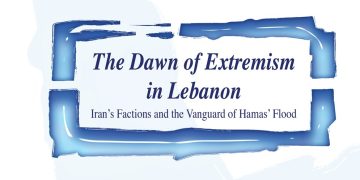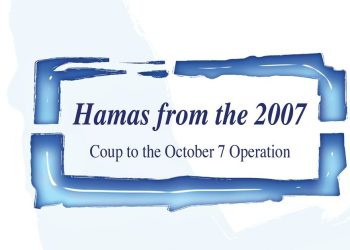Today the danger of so-called foreign fighters[1] has ranked high on the international agenda and has become a major concern for European authorities as well.[2] The phenomenon is not novel. Since the 1980s, in fact, several conflict zones around the world (Bosnia-Herzegovina, Chechnya, Yemen, Somalia, Pakistan, Afghanistan, Iraq and Mali) have attracted a few thousand European foreign fighters.[3] Nevertheless, the current flow of jihadist foreign fighters into Syria and Iraq is unprecedented.
Unfortunately, there is no comprehensive global database on this subject and estimates vary significantly. However, it can be estimated that overall since 2011 no less than 30,000 jihadist foreign fighters have arrived in Syria and Iraq from over 100 countries.[4] About one fifth of these individuals came from the West, mainly from Europe. The magnitude of the problem has not been the same for every European country. In particular, the largest contingents came from France (at least 1,700 foreign fighters), Germany (760), the United Kingdom (760), Belgium (470), Sweden (300), Austria (300), the Netherlands (250).
Interestingly, the EU countries to be most seriously affected by this recent jihadist radicalisation are not necessarily characterized by having the largest number of Muslim inhabitants, neither in absolute terms nor in proportion to their total national populations. In particular, important countries such as Italy and Spain present a limited number of jihadist foreign fighters, despite the relatively large size of their Islamic populations. On the other hand, no more than 20 million Muslims were living in EU countries, which means that these are approximately 16 times overrepresented among the foreign terrorist fighters in Syria and Iraq compared to figures for Muslims traveling from other regions of the world.[5]
Most foreign fighters in Syria and Iraq joined the so-called Islamic State. IS declared migration (hijrah) to the self-proclaimed “caliphate” obligatory and presented it as an act of redemption. On their part, foreign fighters have represented a significant reason behind the success of this armed group, at least until its recent decline. Many of them answered an explicit call by IS’s leader Abu Bakr al-Baghdadi and his followers. Actually, the self-proclamation of the “caliphate” in June 2014, based on an extremist interpretation and application of Sharia law, represented a powerful “pull factor” for many jihadists from all over the world.
A minority of the foreign fighters in Syria and Iraq joined Jabhat al-Nusra (more recently known as Jabhat Fateh al-Sham from 2016 and as Hayat Tahrir al-Sham from 2017), the group originally affiliated to al-Qaeda in Syria, or other smaller entities active in the area. Overall, around one third of European foreign fighters had returned to their countries of departure. In other terms, it can be estimated that the number of returnees to Europe surpassed thousand.
The individual profiles
As many other studies have confirmed, there is no clear-cut profile of a European foreign fighters. This conclusion is in line with the findings of the current literature on radicalisation. In fact, earlier attempts to draw conclusions from socio-demographic variables and to identify the “terrorist personality” have been in part abandoned. The same applies to the foreign fighters phenomenon, in Europe as well.
According to a 2016 report by ICCT,[6] an average of 17% are female (based on the responses from 11 EU Member States). With regard to the place of residence before travelling, in several countries European over 90% originated from large metropolitan areas or peripheral suburbs. Many foreign fighters came from the same neighbourhood or zone, which seems to indicate that in-person pre-existing networks operating can facilitate radicalization processes among people linked by kinship or friendship relations. The data also showed a sizeable number of converts to Islam among foreign fighters: between 6% and 23%.
With respect to socio-demographic characteristics, many jihadist foreign fighters come from a lower-class background but some have middle-class parents. Levels of education vary significantly as well. A significant number have a criminal record in their country of origin. The decision to leave for the conflict area is based on different motivations (or mixes of motivations), including feelings of frustration and resentment in their home countries, aggressive impulses, radical religious/ideological beliefs, quest for excitement and adventure, desire for personal redemption, sense of camaraderie and brotherhood. Moreover, it is often a small group decision rather than an individual one. Such a “bunch of guys” may have been formed in a neighbourhood, a leisure centre or a prison. This fact can explain the geographical concentration in specific towns or areas within the various countries of origin.
In many European countries, foreign fighters are usually either second generation children of Muslim immigrants or recent converts to Islam. So-called “second-generation immigrants” usually represent the backbone of current home-grown jihadism in Europe. Some of them may feel trapped in a sort of limbo: neither strangers nor full-fledged citizens, they do not belong to the community of their parents, but at the same time they do not participate fully in the society in which they have grown up.
As scholars have noted, many “second-generation immigrants” do not interpret Islam as the reproduction of religious practices of their parents’ country of origin; rather, their religious affiliation constitutes a life-style. In particular, ethnic characterisations are few or absent. This may also be true of the tiny minority of “second-generation immigrants” who embraced an extremist violent interpretation of Islam. Moreover, there may be a divergence, if not a clash, between generations (fathers and sons).
Interestingly, native converts to Islam tend to be overrepresented among European foreign fighters, compared to their proportion in the general population. Many of these individuals became “total converts” who demonstrated overriding interest and involvement in an increasingly extremist version of Islam. The conversion process may be quite abrupt and usually is not focused on reflections on theological matters. Sometimes they try to reshape their entire lives in the light of this new radical cause, unconcerned with the resistance and the pressure of their social environment (including their families of origin). This strenuous difference from the context could have further reinforced the perception of being “true believers”.[7]
Actually, as mentioned earlier, not everybody who decides to leave for Syria or Iraq for the cause of jihadism is necessarily a genuine foreign fighter in the strict sense. Importantly, not everybody takes part in combat. IS, in particular, is not only a terrorist group, focused on the use of rebel violence, but also a sort of quasi-state that controls a territory and governs a population. Thus, in recent years it has been possible to join IS as new “citizens” of this “state”, without necessarily engaging in terrorist or military roles. This has made the travel to Syria and Iraq attractive for an unusually diverse group of people when compared to the situation in the past (e.g., al-Qaeda in Iraq after 2003). Hence the diversity within the various national contingents of jihadists, which may consist of both very young and very old persons, of male and female jihadists, and even families with children.
Women play a significant role in the mobilization of jihadist volunteers in Syria and Iraq. On the one hand, IS, like most jihadist groups, basing its activity on a rigid interpretation of Sharia law, prefers not to use women in military combat. However, on the other hand, this terrorist group / quasi-state has accepted and actively promoted the arrival of female muhajirat. Actually, the increasing trend of women’s incorporation into the “caliphate” is noteworthy compared to any other jihadi organization in the recent history of jihadism. It is estimated that no less then 10 percent of westerners who made hijrah to IS’s territories are female, sometimes very young, while this number is much smaller and often close to none in most other jihadi organizations. The women who join the self-proclaimed “caliphate” are incorporated into a rigid and comprehensive system of parallel institutions based on gender-segregation that minimizes the contact with male counterparts.[8] The mobilization in Syria and Iraq involves even children. Is, in particular, has not hesitated to recruit, train and deploy them in its ranks and to glorify their role in propaganda. Some adolescents arrive in the “caliphate” on their own initiative, but clearly younger children are usually accompanied by an older sibling, a parent or their entire family.[9]
Europe’s concerns
From the early days of this mobilization European authorities have expressed twofold concerns related to it. First, it was feared that, upon joining the conflict, foreign fighters would commit acts that would accentuate its duration, sectarian nature and barbarity. These fears have been confirmed by the case, exceptional in its brutality and visibility but hardly unique, of Mohammed Emwazi, the British jihadist who became known as Jihadi John when videos of him beheading Western hostages were released by ISIS and became viral.
But the biggest fear is related to the so-called “blowback effect” that could take place upon their return to their home countries or to a third country they reach after concluding their experience as foreign fighters. These fears had been expressed by European policy-makers since the heydays of the mobilization. In January 2014, for example, EU Home Affairs Commissioner Cecilia Malmström warned about “Europeans [who] travel abroad to train and to fight in combat zones, becoming more radicalised in the process.” “Some of these young men”, she added, “have joined groups with terrorist agendas, they have been trained and hardened in war, and could pose a threat to our security upon their return from a conflict zone. In the longer term they could act as catalysts for terrorism.” Unsurprisingly, a 2016 study found that 45% of all well-documented plots in Western Europe involved one or more cell members with foreign fighter experience.[10]
Yet, despite these fears, European authorities have largely been unable to stem the flow of foreign fighters leaving for the Middle East and, even more troublingly, coming back. The reasons for this inability are various and overlapping. Paramount among them is a numerical one: while dynamics vary from country to country, throughout Europe law enforcement and intelligence agencies have had to deal with an unprecedently large number of radicalized individuals while utilizing relatively limited resources to monitor them. In substance, European authorities have been overwhelmed, having to monitor hundreds, if not thousands (in France authorities estimate, as of early 2017, that the number of individuals that espouse jihadist ideology is around 15,000), of individuals and having to do so with limited manpower.
If resources and manpower are major problem, so are legal limitations. Legislations change from country to country, at times dramatically. But throughout the EU authorities have been faced with severe legal challenges as to what they can do to prevent individuals from traveling to the Middle East to join jihadist group and arrest individuals coming back to Europe after having fought as foreign fighters. The big problem is represented by the huge distinction between knowing something at the intelligence level and knowing it at a judicial level. Intelligence agencies might in many cases know that an individual is planning to go to Syria. But in order to arrest that individual authorities need to prove, with solid evidence that can be introduced in court and beyond a reasonable doubt, that he is seeking to do so. And that is not always an easy thing to do, particularly in countries where the level of proof required by courts to confirm an arrest is particularly high.
Arguably even more frustrating is the dynamic that sees intelligence and law enforcement agencies unable to arrest individuals not just who are seeking to travel to Syria but who are coming back from it. In what sounds like an almost tragicomic scenario, it is not uncommon for European authorities to know of an individual who has traveled to Syria, has clear jihadist leanings and even boasts with friends and/or on social media about having fought in the conflict (at times even posting pictures of himself brandishing an automatic weapon and posing next to jihadist insignia). All these behaviors, while clear signs of radicalization that trigger intense scrutiny from authorities, might not per se warrant an arrest. Again, legislation changes from country to country, but in most European countries authorities should demonstrate, beyond a reasonable doubt and with solid evidence that is admissible in court, that the individual joined a specific terrorist group, actively engaged in fighting, planned or engaged in terrorist attacks or carried out some atrocity. As it can be easily understood, obtaining such detailed evidence on specific behaviors from the battlefield in Syria is extremely challenging, leading to the difficulty, if not at times the impossibility of charging many European foreign fighters upon their return.
These difficulties might appear almost masochistic to some observers. Europe, it has been charged, cannot effectively fight terrorism if it voluntarily decides to do so with one arm tied behind its back, posing at times unsurmountable limits to its own law enforcement and intelligence agencies while providing terrorists and other individuals who want to cause harm to the continent with many rights and privileges. Unsurprisingly the debate over the necessity of finding a balance between the increased security needs of the continent and respecting century long fundamental rights of the accused that characterize European civilization has raged throughout Europe at least since the September 11, 2001 terrorist attacks. Over the last few years various countries have changed their legislation in a more restrictive fashion, without completely revolutionizing the balance between rights and security, but nonetheless providing intelligence and law enforcement agencies with more powers and restricting the rights of individuals suspected of terrorism. Yet even these moves have been under severe scrutiny from the courts, which had times have deemed them unconstitutional and a wide array of commentators, politicians and pressure groups.
Other factors contribute to explaining the difficulties experienced by European authorities. A very important one is the lack of coordination among them. As it is often said, terrorists know no borders but those who chase them are tied by them. While European jihadists move freely from country to country, crossing internal borders without having to show documentation, European authorities operate on a national base. That means that if a terrorist that is under observation in, let’s say, Germany, crosses the border into France (something that can be done without showing any document), German authorities can no longer track him but have to rely on the support of their French counterparts. Information sharing among European countries would therefore be paramount in solving this challenge. Yet, for a variety of reasons that range from bureaucratic hiccups to political tensions to institutional jealousies, the exchange of intelligence among European authorities is marred by countless problems. Things have improved significantly over the last few years. Several effective intelligence sharing systems have been set up both at the bilateral, country-to-country level or at the European, multi-country level. Europol has seen its resources and powers increase substantially in recent years. Yet huge gaps still remain.
The combination of these overlapping factors and the widespread appeal that ISIS’ propaganda has had among small yet important cross sections of European Muslim communities have led to this mass mobilization. The further result has been that, unsurprisingly, over the last few years Europe has been hit with an unprecedented wave of terrorist attacks on its territory. These attacks have not hit all European countries, and while some have been completely spared from even serious plots (that is the case, for example, of Spain and Italy), countries like France and Belgium have been confronted with a seemingly endless string of attacks of various nature and intensity.
Not all attacks that have hit Europe since 2014 have been carried out by returning foreign fighters but the vast majority of them trace their roots to the Syrian/Iraqi conflict. From an operational perspective, in fact, they can be categorized as corresponding to three macro-typologies:
a) terrorist attacks carried out by individuals who were acting under direct orders of the Islamic State’s leadership. Example of this category are the November 13, 2015 attacks in Paris and the March 22, 2016 attacks in Brussels, which were carried out by a group of individuals, the core of which was a tight-knit group of militants from Brussels who had been selected, trained and dispatched by the Islamic State’s Amn Al-Kharji to carry out the attacks
b) terrorist attacks carried out by individuals who had some forms of connections to the Islamic State but acted independently. Under this category fall many of the attacks carried out by sympathizers of the Islamic State who had never traveled to Syria or Iraq but had been in regular contact with the group’s so-called “virtual planners,” charismatic members of the Islamic State of Western origin who make contact with the group’s sympathizers online and eventually direct them to carry out attacks, at time providing them with specific indications. An example of this kind of dynamic is the July 26, 2016 killing of a priest in the small rural church of Saint Etienne du Rouvray, carried out by two French teenagers who until moments before carrying out their act were communicating with a well known French speaking Islamic State operative via encrypted online platforms
c) terrorist attacks carried out by individuals who possessed no connections whatsoever, not even in the virtual space, to the Islamic State but were inspired by its message. Prototypical example of this relatively frequent dynamic is the July 14, 2016 attack in Nice, which was carried out by a Tunisian man who, according to most accounts, lived a very un-Islamic lifestyle, had only recently developed an interest in jihadism and possessed no known connection to the Islamic State.
The European response
To speak of a European response is somewhat of an incorrect approach. Over the last few years, partially due to the increased perception of a threat by European nations, the European Union has taken a more prominent role in counter-terrorism. Institutions like Europol do play a role in shaping a collective response to the challenge. And some approaches are common to all European countries. Yet the response to terrorism remains largely the domain of individual countries, each of which takes different approaches. Laws, resources, political and cultural responses vary enormously from country to country. A European approach is somewhat of a misnomer.
Nonetheless throughout Europe it is possible to observe that most countries have tried to confront the threat of foreign fighters through the application of three kinds of measures: criminal, administrative and CVE.
The criminal approach represents the traditional response of counterterrorism. European countries tend to seek to arrest, prosecute and incarcerate individuals who have engaged in terrorist activities. Important legislative differences exist from country to country, but there are some common patterns and challenges. As said above and even though this dynamic has changed due to various legislative interventions in several countries, in many countries planning to travel to a conflict area is not a crime unless there are clear indications that the individual aims to join a terrorist organization or to commit crimes or has already committed preparatory crimes. Similarly, in most countries individuals who return from a conflict zone can be charged only if certain specific criminally relevant behaviors are demonstrated. Therefore most countries seek to prosecute both aspiring and returning FFs under general terrorism offences. The activities of FFs are often characterized as receiving training for terrorism purposes. Some countries specifically criminalize the receiving of the training (so-called “passive participation” in training). Those who do not, generally try to do so through less specific terrorism-related offences.
The limits of the criminal approach, due mostly to the difficulties in collecting evidence that can be introduced in court, have been described in the previous section. It is for this reason that many countries have introduced an array of administrative measures seeking to supplement criminal provisions in the goal of neutralizing the threat emanating from foreign fighters. Many countries have resorted to revoking the citizenship of their own citizens who have become foreign fighters. In most countries that can be done only if the subject of the action is a dual citizen, as it is argued that a country cannot render an individual stateless.
CVE as an additional solution
Despite the effectiveness of some administrative measures, most European countries have also opted for the introduction of more or less extensive Countering Violent Extremism (CVE) strategies. Due, in fact, to the limits of repressive measures and the fact that not all aspiring/returning foreign fighters necessarily pose a threat, many European countries have devised programs aimed at de-radicalization and reintegration.
“Only repression,” argued a 2014 paper by the Radicalization Awareness Network, the entity created by the European Commission to integrate and improve the actions in the realm of CVE of all member states, “will not solve the problem. Prevention, signalling and providing programmes to help (potential) foreign fighters to leave the path of violent extremism are necessary as well. These actions are often organised on a local level. For instance, first line practitioners, such as teachers and youth workers, can be trained to recognise and refer those who are being influenced to go on jihad. Also, families can be partners in both detecting potential fighters and convincing them to deploy their engagement in a non-violent way. Finally, exit-programmes that have proven to be effective, can be tailored to the target group, for instance by employing formers or practitioners as acceptable intermediaries or coaches.”
Following this philosophy, a number of European countries have introduced CVE initiatives that have suggested the possibility of yielding positive results. One of the most famous is the so-called “Aarhus Model,” from the name of the Danish city where it was engineered. After seeing a disproportionally large wave of foreign fighters living for Syria in the first years of the conflict, the Municipality of Aarhus, in conjunction with various intelligence and law enforcement agencies in Denmark, put together a comprehensive CVE initiative that combines community engagement with targeted interventions seeking to de-radicalize returning foreign fighters. According to Danish officials: “In 2013, 30 people traveled from Aarhus to Syria to participate in the conflict. As of 2014, one person was recorded traveling from Aarhus to Syria. This reduction is largely attributed to the dialogue with the communities from which recruitment takes place” Interventions are highly personalized and target individuals exhibiting signs of radical beliefs. After an individuals’ risk of mobilizing into political violence is assessed, tailored programs (e.g., mentoring) are utilized in an attempt to prevent or halt the progression of radical ideas. The programs also offers medical and psychological treatment to returning foreign fighters as well as assistance with employment and educational opportunities.
Similar initiatives are being implemented or at least considered throughout Europe. It is nonetheless clear, as the Continent is swept by a seemingly endless wave of attacks, that the solution is multifaceted and includes a combination of better law enforcement and intelligence actions (which entails more resources and improved cooperation) and the development of better prevention/rehabilitation schemes. Yet it is also clear that all these improvements could only do so much, as many developments on European security depend from geopolitical events well beyond its borders. And it is also very clear that, no matter what these developments will be, the challenge Europe faces is likely to last for quite some time, arguably potentially a generation.
[1] There is no common and agreed-upon definition of this term. However, drawing in part on an influential formulation by Thomas Hegghammer, a foreign fighter can be defined as an agent who (1) has joined, and operates within the confines of, an insurgency, engaging in combat, (2) lacks citizenship of the conflict state or strong kinship links to its warring factions, (3) lacks affiliation to an official military organisation, and (4) is not motivated essentially by the desire for private gain, unlike a common mercenary. See Hegghammer, T. “The rise of Muslim foreign fighters: Islam and the globalization of Jihad”. International Security, Vol. 35, No. 3, 2010/11, pp. 53–94.
[2] Vidino, L. “European foreign fighters in Syria: Dynamics and responses”. European View, Vol. 13. No. 2, 2014, pp. 217-224.
[3] Schmid, A. P. (with J. Tinnes), Foreign (Terrorist) Fighters with IS: A European Perspective, ICCT Research Paper, The International Centre for Counter-Terrorism – The Hague (ICCT), December 2015, p. 6. See also Duyvesteyn, I. & Peeters, B., Fickle Foreign Fighters? A Cross-Case Analysis of Seven Muslim Foreign Fighter Mobilisations (1980-2015), ICCT Research Paper, The International Centre for Counter-Terrorism – The Hague (ICCT), October 2015.
[4] See , in particular, Foreign Fighters. An Updated Assessment ofthe Flow of Foreign Fighters into Syria and lraq, The Soufan Group, December 2015; Schmid, A. P. (with J. Tinnes), “Foreign (Terrorist) Fighters with IS: A European Perspective”.
[5] Reinares, F., “Jihadist Mobilization, Undemocratic Salafism, and Terrorist Threat in the European Union”. Georgetown Security Studies Review, February 2017, pp. 70-76 (pp. 70-71).
[6] Van Ginkel, B., and E. Entenmann (Eds.), The Foreign Fighters Phenomenon in the European Union. Profiles, Threats & Policies, p. 4 and passim.
[7] Marone, F. Italy’s Jihadists in the Syrian Civil War, ICCT Research Paper, The International Centre for Counter-Terrorism – The Hague (ICCT), Augut 2016, pp. 22-23.
[8] In particular, Khelghat-Doost, H. “Women of the Caliphate: The Mechanism for Women’s incorporation into the Islamic State (IS)”. Perspectives on Terrorism, Vol. 11, No. 1, 2017, pp. 17-25.
[9] Horgan, J. G., Taylor, M., Bloom, M., & Winter, C. “From Cubs to Lions: A Six Stage Model of Child Socialization into the Islamic State”. Studies in Conflict & Terrorism, forthcoming.
[10] Nesser, P., Stenersen, A., & Oftedal, E. “Jihadi Terrorism in Europe: The IS-Effect”. Perspectives on Terrorism, Vol. 10, No, 6, 2016, pp. 3-24.














